Hyundai Tucson: Diagnosis with Diagnostic tool
Hyundai Tucson - Fourth generation (NX4) - (2020-2023) - Workshop Manual / Advanced Driver Assistance System (ADAS) / Rear Corner Radar System / Diagnosis with Diagnostic tool
Components
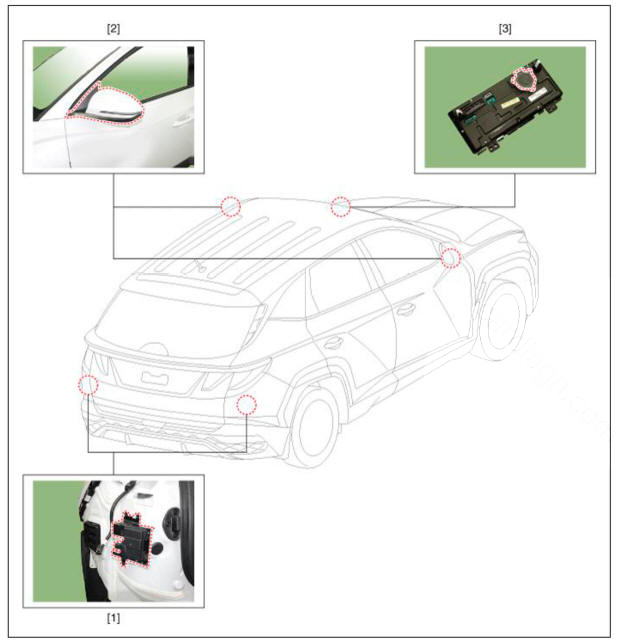
- Rear corner radar unit
- Warning indicator
- Speaker (Cluster)
Diagnosis with Diagnostic tool
- In the body electrical system, failure can be quickly diagnosed by using
the vehicle diagnostic system (Diagnostic tool).
The diagnostic system (Diagnostic tool) provides the following information.
(1) Fault Code Searching : Checking failure and code number (DTC)
(2) Data Analysis : Checking the system input/output data state
(3) Actuation test: Checking the system operation condition
(4) S/W Management: Controlling other features including system option setting and zero point adjustment
- Connect the cable of Diagnostic tool to the data link connector in driver side crash pad lower panel, and turn on the Diagnostic tool.
- If diagnose the vehicle by Diagnostic tool, select "DTC Analysis" and "Vehicle".
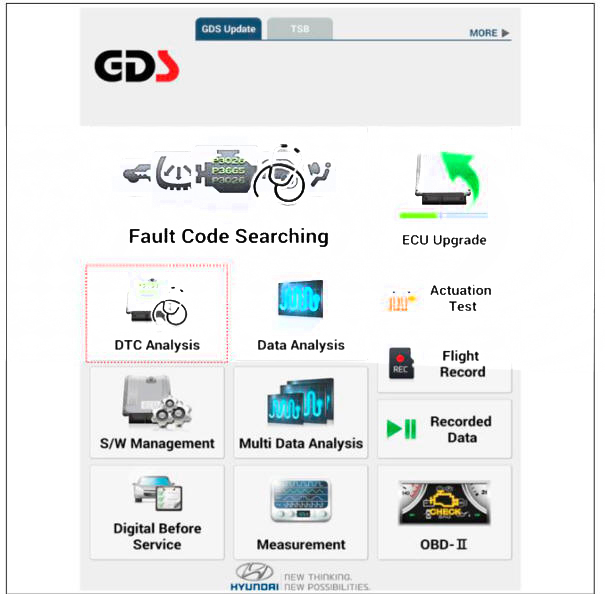
- If check current status, select the "Data Analysis"
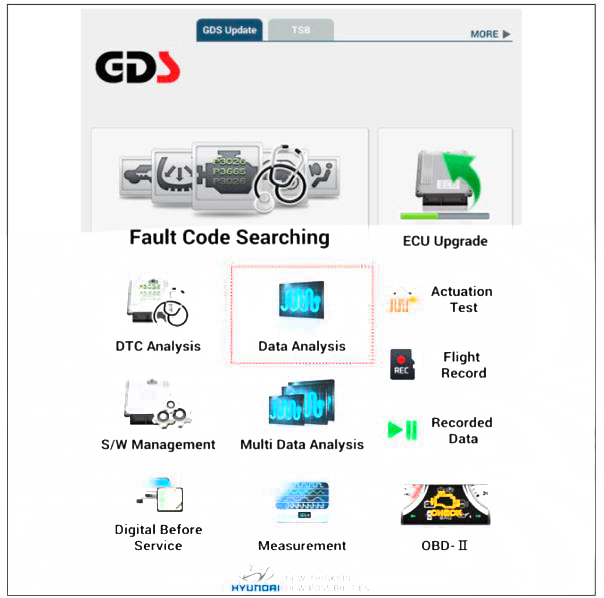
- Select "BCW", if you want to check current data of BCW system.
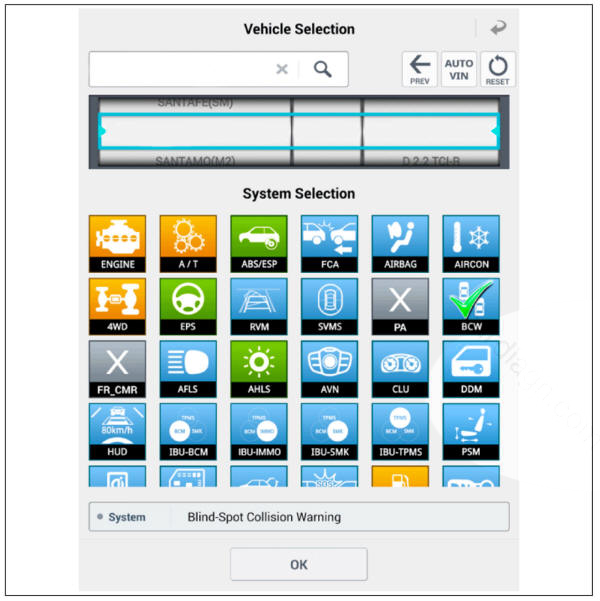
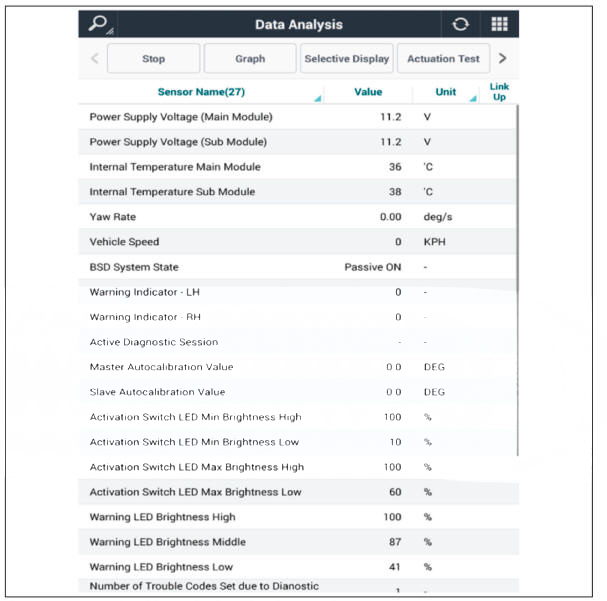
- If you want to check each module operation forcefully, select "Actuation test".

Specifications
BCW, BCA
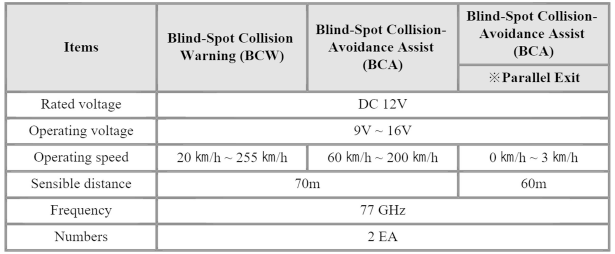
RCCW, RCCA

SEW


READ NEXT:
 Connector and Terminal Function
Connector and Terminal Function
Connector Funtion
Removal
Disconnect the negative (-) battery terminal.
Remove the rear bumper assembly.
(Refer to Body - "Rear Bumper Assembly")
Disconnect the rear corner radar connector (A).
Loosen the mounting n
 Rear Corner Radar Calibration
Rear Corner Radar Calibration
Rear bumper accident vehicles and vehicles that replaced rear corner
radar units must perform rear corner radar unit alignment
using Diagnostic tool.
Connect the cable of Diagnostic tool to the data link connector in
driver side crash pa
 Parking Distance Warning (PDW)
Parking Distance Warning (PDW)
Description
PDW consists of 8 sensors (front: 4 units, rear : 4 units) that are used
to detect obstacles and transmit the result in three
separate warning levels, the first, second and third to IBU via LIN
communication.
IBU decides the
SEE MORE:
 Side airbag (SAB)
Side airbag (SAB)
Components Location
Side airbag (SAB)
Removal
Disconnect the batteiy negative terminal.
WARNING
After disconnecting the cables, wait at least 3 minutes.
Remove the front seat back cover.
(Refer to Body - "Front Seat Back
 Differential carrier case
Differential carrier case
Remove the pinion oil seal (A).
WARNING
When installing oil seal (A), replace oil seal with a new one.
Remove the outer pinion bearing (A).
WARNING
Do not reuse the removed bearing.
Remove the outer pinion bearing race (A)
Information
- Home
- Hyundai Tucson - Fourth generation (NX4) - (2020-2023) - Owner's Manual
- Hyundai Tucson - Fourth generation (NX4) - (2020-2023) - Workshop Manual